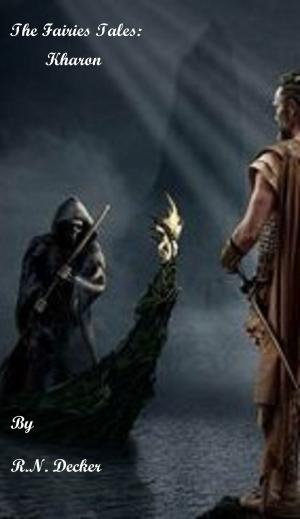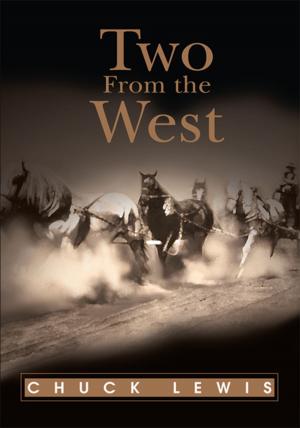| Author: | John A. Peak | ISBN: | 9781310539978 |
| Publisher: | John A. Peak | Publication: | April 30, 2014 |
| Imprint: | Smashwords Edition | Language: | English |
| Author: | John A. Peak |
| ISBN: | 9781310539978 |
| Publisher: | John A. Peak |
| Publication: | April 30, 2014 |
| Imprint: | Smashwords Edition |
| Language: | English |
In January of 1862 Gerald Donellon, a bookish boy living on a small dirt farm in Mississippi, turned 14. By late summer he had been orphaned by Yellow Fever and, with few choices open to him, lied about his age in order to enlist in the Army. On September 16 that same year he caught up to his assigned military unit as it went into bivouac north of Sharpsburg near Antietam Creek. Early the next morning, still without a rifle and nearly paralyzed with fear, he marched into battle.
William of Orange was born on a plantation near the Donellon farm to a field worker who died in childbirth. The child proved to be incorrigible. While avoiding productive work of any kind, he managed to learn how to read, an achievement that was not only illegal, but one that marked him as dangerous, and very nearly impossible to sell. After he fathered a set of twins with a 13-year-old servant girl, the plantation owner volunteered the young slave's labor as his contribution to the war effort.
The white Confederate private and the black slave laborer had known each other from their earliest childhood but neither would have considered the other a friend.
This is primarily Jerry’s story, from the point of view of the ragged, sometimes shoeless, frequently hungry, Confederate private. It is also the story of another young man, born into servitude and named in a spirit of ridicule who, in opposition to the entire world as known to him, simply refuses to accept his own status and then refuses to leave his young family behind as slaves. He only knows this one white boy who might help but he will not accept that their meager resources are probably not enough to get his family out.
Although neither boy can be separated from his inherited milieu, each of them has enough independent intelligence to disregard it, and to gradually recognize himself in the other.
At the center of this book is Race. It is not about the American history of race relations, but about the self-inflicted human tragedy of separation and torment based on no more than race. It is not about sweeping polemics or posturing romantic characters. Rather it is about imperfectly decent people doing what they can in an exceptionally hazardous time and place and among other people who are mostly neither good nor bad but both things, often simultaneously.
Jerry Donellon’s fictitious Company has been grafted on to the real CSA unit known to history as “Hood’s Texas Brigade,” following that organization’s truly remarkable military record from September 17, 1862 when the entire command was reported "dead on the field" to April 9, 1865. On the latter date near Appomattox Courthouse, one of the starved and bloodied survivors called out to his chief who had just signed the surrender, "Say the word, General, and we'll whip 'em again!"
The author claims a right to dramatic leeway but tries to maintain a close fidelity to the real-life events and conditions that the soldiers of Hood’s Texas Brigade endured, including movements, battles and even weather. Where a real historical personage (Thomas Jackson, William Barksdale, Robert E. Lee) appears there is always a real contemporary record that the named individual was at that place, at that time, and, in general, doing those things that are described in the otherwise fictitious narrative.
In January of 1862 Gerald Donellon, a bookish boy living on a small dirt farm in Mississippi, turned 14. By late summer he had been orphaned by Yellow Fever and, with few choices open to him, lied about his age in order to enlist in the Army. On September 16 that same year he caught up to his assigned military unit as it went into bivouac north of Sharpsburg near Antietam Creek. Early the next morning, still without a rifle and nearly paralyzed with fear, he marched into battle.
William of Orange was born on a plantation near the Donellon farm to a field worker who died in childbirth. The child proved to be incorrigible. While avoiding productive work of any kind, he managed to learn how to read, an achievement that was not only illegal, but one that marked him as dangerous, and very nearly impossible to sell. After he fathered a set of twins with a 13-year-old servant girl, the plantation owner volunteered the young slave's labor as his contribution to the war effort.
The white Confederate private and the black slave laborer had known each other from their earliest childhood but neither would have considered the other a friend.
This is primarily Jerry’s story, from the point of view of the ragged, sometimes shoeless, frequently hungry, Confederate private. It is also the story of another young man, born into servitude and named in a spirit of ridicule who, in opposition to the entire world as known to him, simply refuses to accept his own status and then refuses to leave his young family behind as slaves. He only knows this one white boy who might help but he will not accept that their meager resources are probably not enough to get his family out.
Although neither boy can be separated from his inherited milieu, each of them has enough independent intelligence to disregard it, and to gradually recognize himself in the other.
At the center of this book is Race. It is not about the American history of race relations, but about the self-inflicted human tragedy of separation and torment based on no more than race. It is not about sweeping polemics or posturing romantic characters. Rather it is about imperfectly decent people doing what they can in an exceptionally hazardous time and place and among other people who are mostly neither good nor bad but both things, often simultaneously.
Jerry Donellon’s fictitious Company has been grafted on to the real CSA unit known to history as “Hood’s Texas Brigade,” following that organization’s truly remarkable military record from September 17, 1862 when the entire command was reported "dead on the field" to April 9, 1865. On the latter date near Appomattox Courthouse, one of the starved and bloodied survivors called out to his chief who had just signed the surrender, "Say the word, General, and we'll whip 'em again!"
The author claims a right to dramatic leeway but tries to maintain a close fidelity to the real-life events and conditions that the soldiers of Hood’s Texas Brigade endured, including movements, battles and even weather. Where a real historical personage (Thomas Jackson, William Barksdale, Robert E. Lee) appears there is always a real contemporary record that the named individual was at that place, at that time, and, in general, doing those things that are described in the otherwise fictitious narrative.















